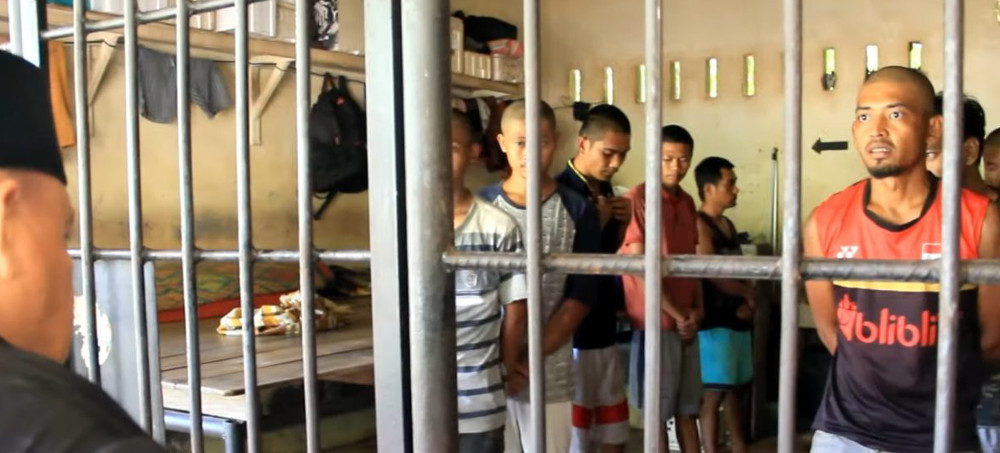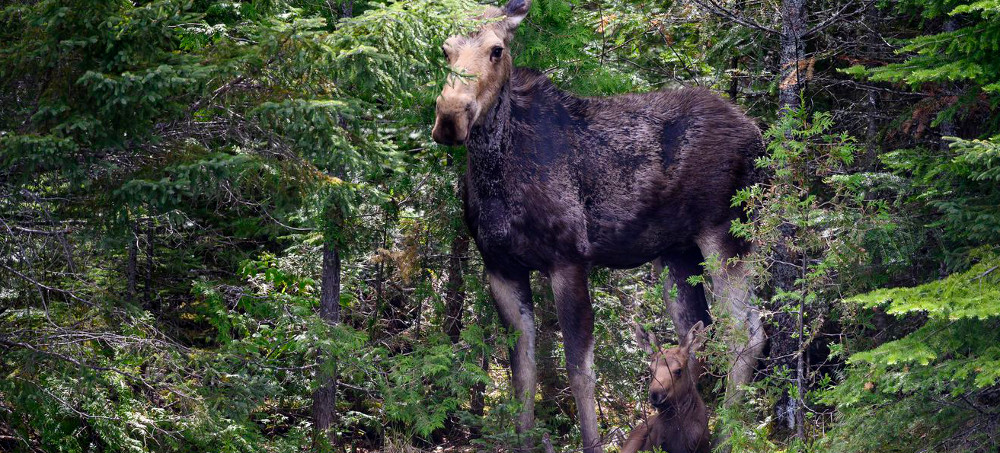When You Back RSN You Are Backing Proven Fighters
Pressuring the networks, not allowing the real story to go unnoticed, making sure our reader's interests do not go quietly away -- this is Reader Supported News, been there done that...doing it again. Support this project, watch what we do.
Come on board.
Marc Ash
Founder, Reader Supported News
If you would prefer to send a check:
Reader Supported News
PO Box 2043 / Citrus Heights, CA 95611
Follow us on facebook and twitter!
Live on the homepage now!
Reader Supported News
Change is a powerful tonic. My Uber driver has a GPS device with a woman’s voice telling him precisely how to take me to JFK to catch a flight. Years ago, the old cabbies Gus and Butch and Spike were proud of their knowledge of the city and now the GPS device opens up the game to newcomers, immigrants, Muhammad and Rafael and Aisha and Eliana. It’s an amazing invention, the inflexion of the woman’s voice is so natural, not robotic. If engineers can develop a device programmed to navigate the streets of New York, then surely they can create a reliable electronic lawyer, and when they do, we’re on the way to reducing the cost of government by 50 or 75 percent. If programmers can’t design a more capable U.S. senator than Ted Cruz, then my name is Kyrsten Sinema.
Change is a tonic and we need it desperately in this country, which has become all too set in concrete. The U.S. Senate is a very ornate 19th-century chamber where not much happens and so it’s practically empty most of the time. A senator will stand up and address a roomful of unoccupied desks, arguing for or against the filibuster, which is as archaic as the dial telephone or tuberculosis, and meanwhile the Royalist party is attempting to suppress voting, which has become too popular in the wrong places, and the suppression is happening in broad daylight, just like the guy I saw years ago on West 90th Street in Manhattan, busting a car window with a broom handle and reaching in to steal the radio, and I said, “What are you doing??” and he said, “None of your business.”
Well, it is our business, even if it’s not my car, and voter suppression is nasty mischief carried out by nabobs and bozos who feel they own the franchise, and I say, Let’s shake things up so these yahoos don’t feel too secure. It’s time to call a new Constitutional Convention. The previous one was held in a nation of fewer than four million persons and now we’re around 330 million, time to go back to the drawing board.
This convention will be populist, representing population, not territory, and its purpose will be to clear out some outmoded bric-a-brac and pack it off to the attic, and we’ll start with the Senate, an elitist body based on the assumption that each state sends its brightest minds to act as a control on the popular whims of the House, but when you look at the membership closely, the assumption falls apart.
If the new Constitution provides mandatory retirement at 62, the quality of the Senate immediately jumps from lackluster to promising, and if we reduce the Senate from 100 to 80 by consolidating states—unite the Dakotas and Carolinas, make Nevada and Utah into Nevuta, Washington and Idaho into Wahoo, Vermont and New Hampshire into Montshire, Texas and Oklahoma into Tokses, Iowa and Missouri into Missiowa, and grant Hawaii and Alaska their independence, and if we use electronic lawyers in government agencies and reduce America’s 3,243 counties to, say, 1,843, we’ll reduce the cost of government dramatically and use some of the savings to expand the Supreme Court to 27, a body that represents the diversity of America rather than a committee of the Federalist Society.
We need more women in power like the GPS woman. I know this from personal experience. I walk into the living room, having read the paper and thought about the news from eastern Europe and I have an interesting opinion about it, and my wife looks at me and says, “You’re spilling your coffee.” And I go to get a paper towel and she says, “Let me do it” and she mops it up because she wants it done right. Men have been spilling coffee more or less constantly the past ten years and we need a change. Don’t argue with me. Just do it and you’ll see I’m right.
 Ukrainian soldiers prepare for a possible Russian invasion. (photo: AFP)
Ukrainian soldiers prepare for a possible Russian invasion. (photo: AFP)
The Biden administration denies any daylight between Washington and Kyiv.
From President Volodymyr Zelenskyy down, the Ukrainian government has tried to urge calm, with senior officials making clear in recent days they don't see the risks now as any more heightened than over the last eight years of Russian-stoked conflict in eastern Ukraine.
Ukrainian Deputy Defense Minister Hanna Malyar, for example, said the number of Russian troops massed on Ukraine's borders "are not enough for a full-scale invasion." Instead, Russian leader Vladimir Putin is using the troop build-up "primarily to politically blackmail the West and pressure Ukraine," she wrote in a Facebook post.
"Russia's tactical goal is provoke integral divisions in our society, sow fear and panic, to destabilize the internal situation," she added.
Ukrainian concern that fear and panic could spread, sending Ukraine's economy spiraling or creating political turmoil, has started to create divisions between the U.S. and Ukraine -- despite efforts on both sides to make clear they stand united against any Russian aggression.
"All is under control. There are no reasons to panic," Zelenskyy said in a televised address to his country Monday night -- but the speech spent more time on COVID-19 than Russia.
Some of the steps the U.S. has taken in recent days, some in Kyiv fear, are playing into Moscow's playbook -- stoking fear and panic.
That includes the State Department's decision to draw down the U.S. embassy, ordering diplomats' families to evacuate and authorizing non-emergency staff to depart if they choose.
State Department spokesperson Ned Price called it a "prudent precaution," but his Ukrainian counterpart, Ministry of Foreign Affairs spokesperson Oleg Nikolenko criticized it as "a premature one and an instance of excessive caution."
"The Russian Federation is currently taking active efforts to destabilize the situation in Ukraine. A large amount of misinformation, manipulation, and fakes are spreading in Ukrainian and international media in order to cause panic among Ukrainians and foreigners, intimidate business, and undermine the economic and financial stability of our state. In this situation, it is important to soberly assess the risks and stay calm," Nikolenko added.
Just four countries have followed the U.S., to varying degrees -- the United Kingdom, Australia, Canada and Germany.
"We cannot allow ourselves for that to happen - that our economy falls. If people cross into a state of panic, that is a dangerous situation for our country, and it will be far easier to then manipulate us, and that is Russia's goal," warned Aleksey Danilov, a top Ukrainian national security official.
Some economic damage is already apparent. Yields on Ukrainian sovereign Eurobonds in U.S. dollars suddenly shot up to 11-14% on Jan. 14 and have risen even higher since -- losing Ukraine access to the international financial market, according to Anders Åslund, a senior fellow at the Stockholm Free World Forum.
"Ukraine's emerging economic problems are entirely due to the shadow cast by the threat of a dramatic escalation in Russian military aggression," Åslund wrote for the Atlantic Council, a Washington-based think tank.
The White House and State Department defended the administration's decisions and rhetoric, denying that drawing down the embassy, putting 8,500 U.S. troops on alert, and warning of an "imminent" threat have escalated the situation.
"I will let others assess, but there are 100,000 troops -- Russian troops -- on the border of Ukraine and no clarity that the leader of Russia doesn't intend to invade. That sounds pretty dangerous to me," White House press secretary Jen Psaki said Tuesday.
But 100,000 is not enough for an invasion, according to Malyar and the top commander for Ukraine's forces on the frontlines. Lt. Gen. Oleksander Pavlyuk told ABC News last week that Ukraine had assessed Russian had 127,000 troops in total, although the U.S. still says approximately 100,000. Either way, Ukraine's own army is approximately 200,000 strong now, and many more Russian troops would be needed to invade a country the size of Texas.
The number of Russian troops is also "not increasing in the way that today many are representing," Danilov, who serves as secretary of Ukraine's national security council, told the BBC in an interview Tuesday. "Is it unpleasant for us? Yes, but for us, it's not news. If for someone in the West that has become news, well, I'm sorry."
Still, Psaki denied there was daylight between Washington and Kyiv, adding, "We are in constant contact with Ukrainians to reiterate our support, to convey updates on shipments of supplies, military equipment -- something that's been happening over the last several days."
Nikolenko too highlighted that military cooperation, praising "its proactive diplomatic position and for strengthening Ukraine's defense capabilities, including the provision of weapons and equipment."
Asked about the differences, the top U.S. diplomat in Ukraine Kristina Kvien denied there were any. In an exclusive interview Tuesday where a shipment of U.S. Javelin anti-tank and other weapons was being unleaded, she told ABC News, "President Zelenskyy is taking the threat very seriously, and he is being careful to make preparations as needed."
The Ukrainian people have "been living with Russian threats for a long time, so I would say that they are just a bit more 'sang-froid' as they say in French. But that doesn't mean that they don't take them seriously," added Kvien, the embassy's chargé d'affaires.
In Kyiv, there is calm, if at least more talk now about the threat of a Russian attack -- whether across the border, in cyber space, or through continued efforts to destabilize Ukraine's government and economy.
"This looks and feels different … It certainly has people a lot more alert, especially if you watch the news all the time," said Reno Domenico, an American businessman who has lived in Ukraine for 15 years. But he said the cafes remain full, and people are out shopping because, "People don't panic, and panic is a bad thing. You make bad decisions when you panic."
After the U.S. Embassy urged Americans to consider departing immediately, Domenico said more people started talking about the possibility. While everyone should have a plan, he added, his is to stay put for now.
 Rep. Pramila Jayapal (D-WA) questions Attorney General William Barr during a House Judiciary Committee hearing on the oversight of the Department of Justice on Capitol Hill, Tuesday, July 28th, 2020. (photo: Matt McClain/AP)
Rep. Pramila Jayapal (D-WA) questions Attorney General William Barr during a House Judiciary Committee hearing on the oversight of the Department of Justice on Capitol Hill, Tuesday, July 28th, 2020. (photo: Matt McClain/AP)
"In the months since negotiations around the Build Back Better Act stalled, the case for this legislation has only become more urgent," said Rep. Pramila Jayapal (D-Wash.), who chairs the group of liberal lawmakers on Capitol Hill, wrote in the Thursday statement.
"There is agreement among Senate Democrats on significant parts of this bill: climate action, the care economy, taking on Big Pharma's price gouging, and lowering health care costs. There is agreement on the need to reduce rising costs facing ordinary Americans - and that is exactly what Build Back Better does," she wrote.
The CPC has been a leading force at the negotiating table during months of lapsed deadlines to pass the massive spending package.
Progressive officeholders have consistently urged two centrist holdouts in the upper chamber, Sens. Joe Manchin (D-W.Va.) and Krysten Sinema (D-Ariz.), to get on board with the rest of the Senate Democratic caucus and majority of House Democrats to pass the president's signature first-term proposal to expand the social safety net and protect the environment.
In recent weeks, they have become more vocal in their desire to see results as further delays and a lack of movement has depressed parts of the party and general public.
Jayapal listed several issues that have escalated recently that are hurting Americans and explained how Biden has a chance to tell voters that he worked with congressional Democrats to fix some of what has been broken.
"Public housing residents have endured devastating fires, the cost of insulin and other prescription drugs continue to crush working people, and parents are desperate for child care support," she wrote. "This desperately needed relief cannot be delayed any longer."
 Fox News headquarters in Manhattan. (photo: Drew Angerer/Getty)
Fox News headquarters in Manhattan. (photo: Drew Angerer/Getty)
The network has some of the strictest COVID protocols around, but you’d never know it listening to its biggest names, Andy Levy and Molly Jong-Fast say on the latest New Abnormal.
“They are literally killing their viewers. I don’t think there’s any doubt about that,” says The New Abnormal co-host Andy Levy. “It was really interesting to see actual correlations between Trump-voting counties and Fox News viewership and rates of death from COVID. It’s just amazing what they’re doing.”
“Fox News has one job, right?” says Molly. “Get Republicans in power, keep them in power. So it’s worth branching out into the idea that, like, Tucker Carlson is the kind of spiritual leader of the GOP these days.”
Speaking of Fox hosts, The New Abnormal producer Jesse Cannon notices that in the midst of Sarah Palin testing positive for COVID and then continuing to dine out in New York, Jesse Waters made sure to the former Alaska governor from her hotel room, even though they’re both in the city. Whatever the network says about COVID, its strict protocols for its own talent and building shows what its executives really think.
Plus, Washington Post columnist Greg Sargent talks about how Glenn Youngkin managed to convince Virginians that school board members trying to follow the law were “power-mad bureaucrats who are trampling on the rights of virtuous parents,” and Stanford professor Michael Rosenfeld, the author of The Rainbow After the Storm: Marriage Equality and Social Change in the U.S , explains how America went from 11 percent support for marriage equality in 1988 to about 70 percent now.
 Senator Joe Manchin of West Virginia received the maximum permissible donation of $5,000 each from the Home Depot co-founder Ken Langone and his wife. (photo: Kent Nishimura/Shutterstock)
Senator Joe Manchin of West Virginia received the maximum permissible donation of $5,000 each from the Home Depot co-founder Ken Langone and his wife. (photo: Kent Nishimura/Shutterstock)
Home Depot co-founder Ken Langone, author of I Love Capitalism!, said of the Democratic senator: ‘Thank God for Joe Manchin’
The Build Back Better plan sought to boost health and social care, and to help combat the climate crisis, at a price tag of $1.75tn.
Manchin, one of two key swing votes in the 50-50 Senate, used a Fox News Sunday interview in December to say he was finally a “no” on the legislation.
The move appeared to surprise Biden, and enraged progressives, but Ken Langone was presumably delighted.
The co-founder of Home Depot and author of a 2018 book called I Love Capitalism! had signaled his support for Manchin before the senator made his move on Build Back Better.
“I don’t see leadership any place in this country. Thank God for Joe Manchin,” Langone told CNBC in November. “I’m going to have one of the biggest fundraisers I’ve ever had for him. He’s special. He’s precious. He’s a great American.”
Manchin voted for Biden’s earlier Covid relief and stimulus package, as well as for a bipartisan infrastructure bill, but helped to water down both.
In December, shortly after Manchin torpedoed Biden’s flagship legislation, Langone and his wife each gave $5,000 to Manchin’s Country Roads political action committee, CNBC reported. The amount is the most any individual can give in a year.
CNBC also listed donations from major corporations that saw Country Roads raise more than $150,000 more in December than it did in November.
Manchin is next up for re-election in 2024. As the only Democrat in major office in West Virginia, he holds outsized power in the evenly divided Senate – a position that would change if Republicans take back the chamber in November.
Langone has contributed to Democrats but predominantly supports Republicans. He backed Trump in 2016, and continued to support him while in the White House, though he chided him over the Capitol riot.
CNBC reported that Langone has recently made much larger donations than to Manchin, including $1m to a fund that works to defeat Democratic senators and half a million dollars to Americans for Prosperity Action, a group backed by the hard-right Koch family.
In his book I Love Capitalism!, Langone writes of his fear of socialism in the US, a fear stoked by the Vermont senator Bernie Sanders’s run for the Democratic presidential nomination in 2016.
Some young Americans, Langone says, think the US “should be headed toward something that, in my mind, resembles socialism: guaranteed income. Free college tuition. Single-payer healthcare.
“I disagree. Strongly.”
He also writes that he disagrees “not (as you might believe) because I’m a rich guy trying to hold on to my money. I disagree because socialism is based on the false notion that we should all be exactly equal in every single way.”
Neither Langone nor Manchin immediately responded to requests for comment.
 A district head in Sumatra could face human trafficking charges after he was found to have imprisoned 48 men at his compound who worked for no pay at his oil palm plantation. (photo: AFP)
A district head in Sumatra could face human trafficking charges after he was found to have imprisoned 48 men at his compound who worked for no pay at his oil palm plantation. (photo: AFP)
Agents from the KPK, Indonesia’s anti-corruption commission, found 48 men locked up in barred cells during a raid on Jan. 18 at the residential compound of Terbit Rencana Perangin Angin, the head of Langkat district. Police said at least one of the men was found to have bruises.
Terbit, who was wanted on separate allegations of bribery, was not at home during the sting, but surrendered to the authorities the next day. He denied allegations he was keeping the men in captivity to work without pay on his oil palm plantation.
But the evidence says otherwise, according to labor rights advocates.
Anis Hidayah, executive director of the migrant worker advocacy NGO Migrant Care, said the detainees were forced to work every day from 8 a.m. to 6 p.m., were only given two meals a day, and were subjected to physical assaults.
“These palm oil workers also reportedly do not receive wages at all and are not given proper meals,” she said.
The detainees have since been released into the care of their families, while Migrant Care has filed a report against Terbit with the national human rights commission.
No pay, but extra pudding
In a video uploaded to his wife’s YouTube channel last year, Terbit claimed the men caged at his house were drug addicts being rehabilitated. (As a district head, or bupati, he has zero authority to detain anyone.)
Terbit, who is also one of the richest bupatis in Indonesia, with declared assets of 85 billion rupiah ($5.9 million), said he built the cells 10 years ago and that the men locked inside them had come voluntarily for rehab. He also said he employed some of them for his palm oil operations; the video showed some of the men unloading palm fruit from trucks and processing them in a mill.
One of the men, identifying himself as Terang, said in the video that he had passed a year in rehab and expressed thanks to Terbit “because I’ve recovered and am now employed.”
Another of the detainees, Jefri Sembiring, who spent four months locked up before being released following the KPK raid, said he felt his life had been getting back on track, telling local media that “I was comfortable there.”
His wife, Hana, said she hoped the detention center wouldn’t be shut down because she wanted her husband to continue his recovery there.
Testimonies like these, according to police, make it difficult to conclude that the men were subjected to modern-day slavery.
“We see that their parents handed them over voluntarily, and they also consented [to being locked up],” Ahmad Ramadhan, a spokesman for the National Police, said at a Jan. 25 press conference. “Some of them are employed at the palm oil mill owned by the district head with the aim to provide them with skills that could be useful once they’re out of the rehabilitation place.”
Police also justified the lack of pay for the men’s labor, saying those who worked were rewarded with food. “They aren’t given wages as workers because they’re inmates,” Ahmad said. “But they’re given extra pudding and food.”
‘Exploit the victims’
The police’s ambivalence about treating the case as one of slavery chimes with the reluctance of other government agencies to strongly condemn Terbit’s actions.
The National Narcotics Agency (BNN), which oversees rehab centers across Indonesia, confirmed that the facility at Terbit’s compound wasn’t a licensed rehab center. Yet while the BNN’s district office inspected it in 2017, it didn’t shut down the site at the time, for reasons that are still unknown.
The national rights commission, meanwhile, has cautioned against declaring the case one of slavery.
“We want to see the bigger picture, whether it’s true there was a modern slavery here or whether it was just a rehabilitation center being run in the traditional manner,” said Choirul Anam, a member of the commission. He suggested it could plausibly be a rehab center if the detainees had access to medical care.
But legal experts outside the Indonesian government say there’s no question this is a case of slave labor.
“The goal was to exploit the victims,” said Ninik Rahayu, a legal expert and former national ombudsperson. “The victims didn’t have any other choice. Their labor was used. So this is slavery.”
She said Terbit exploited the drug addicts’ vulnerable position, making this a case of “human slavery,” for which the district head should be charged with human trafficking.
Maidina Rahmawati, a researcher at the Institute for Criminal Justice Reform (ICJR), agreed, saying the fundamental facts — that the men were deprived of their freedom and not paid for their labor — pointed to a clear case of exploitation.
She added the positive testimonies given by some of the men and their family members may have been coerced from them under intimidation.
Following the raid, the BNN carried out drug tests on 11 of the 48 inmates and all 11 tested negative, while the rest refused to be tested.
Widespread labor violations
Sawit Watch, an NGO that tracks violations in the palm oil industry, says the case in Langkat is just the tip of the iceberg in an industry where labor violations are widespread.
“This is because lack of monitoring,” Sawit Watch executive director Achmad Surambo told Mongabay. “The number of labor inspectors in the plantation industry is very small.”
In 2012, Sawit Watch uncovered a case in which people were trafficked from Sumatra to work on plantations in Borneo. They were kept locked up in a house, and only released in the morning to work.
“In the evening, they went back to the house and the door was locked,” Achmad said. “This was allowed to happen because of lack of monitoring, especially in a remote area [like this].”
Some 7 million Indonesians are employed in the palm oil industry, according to official data, of whom 70% work without contract and with little to no protection.
“What we want is humane working conditions,” Achmad said, pointing to legislation currently in parliament that would help improve protections for palm oil workers.
The bill is in the docket of priority legislation for passage, but progress has been sluggish. The Langkat case, and the public outcry that it has elicited, should be a wake-up call to spur parliament into passing the bill swiftly, Achmad said.
“I think this issue should be discussed in the public so that this kind of case doesn’t happen again,” he said. “What’s happening in Langkat is very degrading to people, where their freedom is taken away from them. That used to only happen in the past, so why are we still finding it in modern times?”
Illegal wildlife possession
For Terbit, the troubles are just beginning. Besides the corruption charges that have already been pressed against him by the KPK, for which he could be jailed for five years, he also faces possible charges of human trafficking (up to 15 years) and illegal wildlife possession (seven years).
During the KPK raid on Terbit’s compound, officers found seven threatened animals, all protected under Indonesia’s conservation act and therefore illegal to keep in captivity.
The North Sumatra provincial conservation agency, or BBKSDA, confiscated the animals on Jan. 25 and moved them to wildlife rescue and rehabilitation facilities. They include a Sumatran orangutan (Pongo abelii), a black-crested macaque (Cynopithecus niger) and two Bali starlings (Leucopsar rothschildi), all listed as critically endangered, as well as a crested hawk-eagle (Nisaetus cirrhatus) and two common hill mynas (Gracula religiosa).
This article was originally published on Mongabay.
 A moose and its calf stand on the south shore of Watap Lake in the Boundary Waters Canoe Area Wilderness in Minnesota in June 2019. (photo: Aaron Lavinsky/Getty)
A moose and its calf stand on the south shore of Watap Lake in the Boundary Waters Canoe Area Wilderness in Minnesota in June 2019. (photo: Aaron Lavinsky/Getty)
Brainworms and ticks are decimating an animal sacred to the region’s original inhabitants.
A rumble rose behind her. She turned around and saw it — an enormous bull moose, its antlers brushing a nearby birch. She raised her rifle. “I took a few deep breaths,” McCormick, now in her 30s, recalled in an interview with Vox, “and took the shot.”
Formative experiences involving moose were once commonplace in northeast Minnesota on the north shores of Lake Superior, home of the Ojibwe people. That includes McCormick and her family, who have lived in the region for centuries. Indigenous communities in the US and Canada consider the animal a “cultural keystone,” historically both a critical food source and an integral part of spiritual and cultural practices.
A single moose can yield upward of 700 pounds of meat, more than enough to sustain a family through a long winter. But subsistence hunting of moose has become increasingly rare as the species faces numerous threats, like disease, that come with climate change. Moose are disappearing from northeast Minnesota, where it’s estimated they once numbered over 10,000. Since 2006, the population in the state has fallen by 64 percent.
“The moose is declining directly as a result of climate change,” said Seth Moore, a biologist who studies the animals and collaborates with McCormick’s tribe, the Grand Portage Band of Lake Superior Chippewa, on moose conservation.
When the Ojibwe first encountered European settlers in the early 1600s, their territory stretched some 2,000 miles, from Lake Ontario to the northern Great Plains in present-day Canada. In just a few hundred years, descendants of those settlers engineered an extractive economy based around commodity farming, mining, and oil and gas. Today, Ojibwe homelands are a fraction of what they once were, and the fossil fuel economy continues to raise global temperatures, changing the life cycles — and even the shapes and sizes — of species large and small.
Dwindling populations of species like the moose demonstrate how second- and third-order effects of climate change can upend ecosystems that have sustained human life, ancestral knowledge, and culture for generations. In southeast Alaska, for example, Indigenous peoples have documented a reduced harvest of Pacific salmon due to warmer waters. In the northern Great Lakes region, wild rice that Anishinaabe communities like McCormick’s have long depended on can’t properly take root during warming winters. (The Anishinaabe are a culturally related group of tribes that includes the Ojibwe.)
Minnesota’s moose are the same species found in, say, Maine or eastern Canada. (North America’s moose comprise four subspecies; notably, moose in Maine are facing many of the same threats.) But if moose in Minnesota’s boreal forests were to blink out, not only would the downstream ripples be felt across the web of life, the region’s original human inhabitants and environmental stewards would lose an important piece of their identity, too.
The moose plays a sacred role in Ojibwe culture
As long as the Ojibwe have been here, they have depended on and revered the moose. Yet that history has been erased from the popular consciousness. “If people would have taken the time to learn more about the Anishinaabe, what would this country look like?” asked Jeff Tibbetts, a member of the Fond du Lac Band of Lake Superior Chippewa who also harvests moose. “I think it would be a lot stronger.”
Tibbetts, McCormick, and other Indigenous people who consider the moose a non-human relative face an existential dilemma. “Most people know about the relationship between the Plains Indians and the buffalo,” said Carl Gawboy, an Ojibwe painter who lives near Duluth, Minnesota (and features moose in many of his works). But few understand that a similar tie exists between the Ojibwe and the moose, he adds.
Gawboy’s ancestors played games with small pieces made from moose antlers; they made rattles from the hooves, stockings from the hocks, and snowshoe lashings and other kinds of clothing from the hides, he explained. Some Indigenous artists continue to practice traditional moose hair embroidery, he said.
The moose is also core to the social fabric of many Ojibwe communities. “If someone does something for you,” McCormick explained, “a kind gesture would be to pull out a pound of moose meat to say thank you.”
After McCormick shot her first moose as a teenager, she knelt beside it and said a prayer of thanks. Later, she took the tongue — a delicacy — to an elder in the community. “This is something that has given its life so that I can live,” McCormick said, “so that my family can live.”
But a few years later, the moose started to vanish from those same woods.
A moose mystery was solved with GPS collars and helicopters
At first it was unclear what, exactly, was to blame.
In a healthy moose population, the adult mortality rate is typically between 8 and 10 percent, according to Moore. But starting about a decade ago, when McCormick’s tribe tapped Moore to help them figure out why moose were disappearing from northern Minnesota, the rate was closer to 20 percent.
Moore had seen aerial surveys showing how rapidly the massive herbivores were vanishing, but still, “at the beginning it was a total mystery,” Moore told Vox. “We had no idea what was causing it.”
Their focus initially turned to another iconic North American species: gray wolves. Over the past three decades, the region’s wolf population has grown exponentially. Warmer winters have made the northeastern woods hospitable to their primary food source — white-tailed deer. So when Moore and his team first began studying the moose decline here in 2010, they thought that wolf packs eating adult moose was likely a leading cause. And they were right that wolves were a factor — but it wasn’t adults they were killing.
“In the spring, moose calves are the easiest thing to eat,” Moore said. He and his team have since found that eight of every 10 moose calves born in northeast Minnesota are now killed by wolves in their first two weeks of life. Such a high calf mortality rate means adult moose aren’t being replenished when they die.
But the major killers of adult moose were altogether different. And it took a lot of intensive research to figure it out.
Several times each winter, Moore and his colleagues would go up in a helicopter to survey for moose. (The team does this work by air because the territory is so vast and unpopulated by people — plus, seeing a wild moose is a rare occurrence.) When they spotted one, they would dart the animal with a tranquilizer gun, bring the chopper down, and then hike to it.
Over the course of a decade, the researchers outfitted more than 160 adult moose with GPS collars to track their movements and activity level. If a moose stops moving for more than six hours, Moore gets a text alert with the animal’s location. “We’ll put together a team and head out, sometimes miles into the woods,” Moore said. “When we get there, typically, we’ll find a dead moose.”
Moore and his team then take blood and tissue samples from the moose’s body and send them to a lab, where technicians determine a cause of death.
After the researchers had accumulated three years’ worth of data, they started to see patterns that suggested that wolves, along with human recreational hunting, weren’t primary forces hurting the adult moose, after all.
The biggest threats were smaller creatures but just as dangerous.
Climate change means it’s boom times for brainworms and ticks
When Moore’s team began getting tissue sample results back after their first few winters collecting data, they pinned the leading cause of moose death in northeast Minnesota on a culprit that could fit in the palm of your hand: a type of parasitic brainworm.
An odd downstream effect of climate change is that these 2- to 3-inch long critters are catching rides in from elsewhere — and are overwhelming the moose. These freeloaders have slipped into this region via white-tailed deer, a host that the worms have co-evolved with and don’t cause any harm to (even though they burrow into the deer’s brains).
White-tailed deer and North American moose don’t normally share habitat; the deer’s shorter legs and thinner fur aren’t suited for the deep snow and subzero temperatures that moose prefer. But in the past few decades, as temperatures have risen and snow depths have shrunk, deer have been shifting northward into moose territory — and they’ve been taking the brainworms with them.
Brainworms eventually hatch into the deer’s bloodstream and then get dumped in their feces. On the forest floor, snails and slugs consume the deer droppings and then climb trees and shrubs, to be inadvertently eaten by foraging moose.
What happens next is dire. After the eggs hatch inside the moose’s brain, the worms tunnel around and, unlike in deer, cause serious neurological damage. Brainwormed moose show telltale signs of infestation — they walk in aimless circles, heads tilted to one side. They die either of starvation or hypothermia from loss of body fat.
Warmer winters are also driving the second-biggest moose killer that Moore and his team discovered: ticks.
Climate change has caused a tick explosion by melting away what has typically kept their numbers in check. Northern Minnesota’s ticks survive the cold winter by attaching themselves to the warm, thick coats of moose. In the spring, the ticks fall to the ground to lay eggs. Ice and snow used to kill a sizable portion of them before they could do so. But that crusty layer is melting earlier than ever, so now more ticks survive, resulting in skyrocketing populations. It’s enough for fatal tick infestations.
Moore and his colleagues have found moose covered in thousands of ticks. To relieve some of the pain and itching, moose will rub against trees, often wearing off patches of fur. Moose infested with ticks are typically missing 60 to 70 percent of their coat, according to Moore. Without their fur to protect them from the harsh winters, they often die from hypothermia or blood loss.
“It’s horrifying looking,” he said. “They’re called ‘ghost moose’ because their skin is much lighter than their hair.”
“It’s a never-ending battle”
Jeff Tibbetts still goes out moose hunting most seasons, but unlike in previous years, he often comes home empty-handed. There just aren’t as many moose out there, he says. He’s clear-eyed about what this could mean for his tribe — “if the numbers get too low,” he said, “we’ll stop hunting them.” But he does see evidence from Moore’s team, showing that the population has begun to stabilize in the last two years, as a reason for hope. (Moore said this could be due to recent severe winters, which dropped the number of brainworm-carrying deer in the region and also brought deeper snow, meaning more ticks are dying before they have a chance to attach to moose.)
Tibbetts’s tribe decides as a group how many hunting permits to give each season. Tibbetts also sees it as his and his tribe’s responsibility to maintain healthy moose habitat. That includes limiting carbon dioxide and other greenhouse gases, which is part of the reason why, he says, so many Indigenous people are on the front lines fighting against oil pipelines like the Dakota Access Pipeline and Enbridge Line 3.
Hundreds of years ago, the Ojibwe signed treaties that guaranteed their right to continue to hunt, fish, and gather wild foods on lands they ceded to the US government. If species like the moose can no longer thrive on those lands because of state and federal policies that promoted fossil fuel use, many Indigenous people see that as a violation of those treaties, and intend to fight to protect those rights.
“The resiliency of native people can’t be questioned,” Tibbetts said. “It’s a never-ending battle.”
Follow us on facebook and twitter!
PO Box 2043 / Citrus Heights, CA 95611



No comments:
Post a Comment